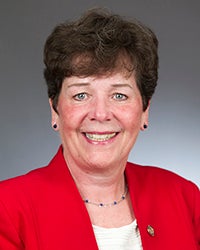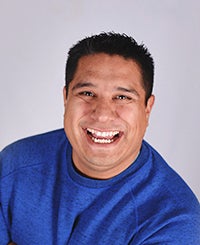Candidate Q&A: Minnesota House District 27A
Published 9:49 am Thursday, October 1, 2020
|
Getting your Trinity Audio player ready...
|
By Michael Stoll, Austin Daily Herald
Author’s note: This is a continuation of the Tribune’s candidate Q&A features and the third featuring Minnesota House District 27A Rep. Peggy Bennett (R) and challenger Thomas Martinez (DFL). For this feature, the candidates were asked questions about education.
Do you believe an opportunity gap exists in Minnesota education?
Peggy Bennett: Minnesota has one of the highest achievement gaps in the nation. This is not a teacher problem — we have thousands of high-quality teachers in our state — it is a system problem.

Peggy Bennett
Data clearly shows our educational system is no longer meeting the needs of a significant number of Minnesota children, especially children of color. This has created unequal opportunity for a substantial segment of our student population, especially in inner city areas.
As a former schoolteacher, I know education is one of the main keys for success. We cannot continue to ignore the abysmal graduation rates nor the fact that only a little more than half of Minnesota children are proficient in reading and math.
Our educational system is stuck. Pouring more money into the same old system will not fix the problem. If it were the solution, then Minneapolis and St. Paul students — who receive thousands of dollars in additional per pupil funding — would be our top scholars.
Did you know that our state has invested an additional $3.9 billion dollars ($4,000 per pupil) into Minnesota schools since 2003, a 7.6% per pupil increase adjusted for inflation? Yet test scores have remained stagnant and low.
I believe innovation is the answer; thinking outside the box and finding ways to educationally reengage a significant segment of Minnesota families. I have already introduced bills, and have more planned, to address this issue. Our children deserve the hope that a good education brings.
Thomas Martinez: Yes, an opportunity gap exists. The Federal Reserve Bank of Minneapolis in 2019 found that Minnesota is among the worst in the nation in achievement gaps. There are harsh socioeconomic disparities among children of every race, and people of color are disproportionately affected.

Thomas Martinez
If we are going to make a meaningful change and narrow that gap, we are going to have to strengthen low-income families and provide a ladder for children from the time they are born until the time they enter the job market. We need to make sure families are food secure, have access to quality healthcare and safe, affordable housing, have high speed internet access and an affordable pathway to college. We need to promote after-school programs, mentorships and community education programs. When our children thrive, our community will, too.
I will be a pro-family legislator. I am the father of four small children and I am depending on our public education system to help my children succeed. When we provide a means for social mobility to low-income families, we will begin to close the opportunity gap.
What, if anything, would you like to see changed in Minnesota’s current curriculum standards?
Bennett: We need to have a thoughtful reduction to Minnesota’s curriculum standards — and that process needs to begin with the recommendations of the parents, teachers and professionals at the local level who work with the students every day and not with bureaucrats or legislators.
We need to be more realistic about what can be accomplished in our schools on a day-to-day basis. As a state, we continue to pile standard upon standard, mandate upon mandate, bullying instruction, social issues, diversity and more — all without taking anything away. All these layers are no longer manageable for teachers. The result of trying to teach everything is that students really learn nothing well.
A basic number of core state academic standards are important, but schools and teachers also need to be empowered as professionals to innovate. That empowerment begins with less mandates from the government and more flexibility to meet students’ needs. That is why I authored a bill to give our schools and educators more flexibility to innovate and meet the needs of the children they teach. Piling on more government requirements is not the answer — flexibility and innovation is.
Martinez: Minnesota schools have done a great job maintaining art classes, band and orchestra through tight budgets. They have kept up with rapid advances in technology in digital media and industrial arts. Minnesota schools have taken extra steps to ensure students are ready for college by the time they graduate. Minnesota educators and staff are innovative and caring, and I would seek to empower them further as a voice for them in St. Paul.
As a blue collar worker myself, I understand there is a need for skilled laborers in southern Minnesota. I would advocate for more skilled trade and college credit courses being offered in Minnesota high schools. We need to replace an aging workforce as our largest generation enters retirement age. Some high schools in rural Minnesota are choosing to offer welding classes on weekends, and they are turning out students graduating from high school and beginning jobs that pay an annual salary of $50,000.
This is the kind of innovation I would support. I would also welcome additional emphasis on financial literacy so students understand the risks and rewards of loans, interest rates, debt, savings and investment.
How should schools address the increase in mental health problems among Minnesota students?
Bennett: Children are coming to school with more and more mental health issues and at a younger age. This is incredibly impactful on education. Unfortunately, schools are having to deal with the outcomes of societal issues. We must get to the source(s) of what is causing so many mental health issues in children.
We need more funding for additional school mental health staff, including early childhood. Unfortunately, we are also dealing with a mental health professional shortage — particularly in rural areas of our state. Innovation and flexibility can help.
For example, a bill I authored would bring more opportunity for tele-mental health in schools and allow for tele-counseling right in the school (where appropriate) for children who do not have access to a mental health professional in the area.
Another example of innovation that works is a program Albert Lea Area Schools had where a mental health professional/trusted adult would meet and walk with students in the hallway instead of taking them to an office. This program was showing success, but is obviously staff intensive and thus cost prohibitive.
We need both innovation and additional funding to deal with student mental health problems in schools.
Martinez: We have some tools in place already to help struggling students, but more is needed. Special education services, student resource officers and school counselors do phenomenal work, but the truth is many students slip through the cracks.
Minnesota currently has a very high student to counselor ratio, 792 students per counselor, and adding more counselors alone may not address this increasing need.
A mental health crisis might be an isolated incident or a signal that longer term medical intervention is necessary. It could be the result of a genetic variation or trauma or stress.
Whatever the cause, when students get the attention they need, such as counseling at school, health care services or extra help with schoolwork after class, they have better attendance and are more likely to graduate.
Still, more can be done. In Fairmont County, schools are partnering with nonprofits, which interact with students on campus. Mower County recently launched Austin Aspires, which has a cradle to career approach to education. As a legislator, I would seek to encourage and support such innovative programs.
Do you believe Minnesota’s Safe Learning Plan for the 2020-21 school year is an effective response to addressing educational safety concerns during the coronavirus pandemic?
Bennett: Schools have been put in a tough place with COVID. One group says to do this and another to do that. That is a lot of pressure. Then we have the teachers who understand which strategies are realistic and which are not — try getting a preschooler to keep a mask on properly all day.
Teachers and school officials are not allowed to fix the problems because of inflexible state COVID mandates. Although the governor’s Safe Learning Plan allows for some individualization among school districts, it is still too inflexible and does not really allow school officials to make the best plans for their area and their students.
For example, one school district had to move to all remote learning because the county’s COVID cases exceeded the SLP virus case requirements. However, when analyzing those case increases, they were all coming from the local prison and were not in the general community.
The state Legislature should have been involved in these plans, giving voice to local residents and schools who deserve to be part of the solution. Parents, administrators and teachers need the freedom to make the right choices for their area and not be given inflexible dictates from a single entity.
Martinez: I approve of the Minnesota Safe Learning Plan. Minnesota public health officials have been data driven and, compared to other states, I think they have done a great job keeping Minnesota students, teachers and staff safe. It was wise to provide schools with strong statewide guidelines, but also to allow schools to make decisions as to how and when to open and when to adjust as the virus numbers go up or down. I found it especially helpful to allow individual students and staff the freedom to work or learn from home if they wish.
On a personal note, I am proud of the residents in 27A who have masked up, socially distanced and stayed home when sick to prevent the spread of the virus. It’s regrettable that public health has become a political football. Had we come together in March with an open-minded willingness to adhere to best practices promoted by state health experts, I think we, and our schools in particular, would be in a much better place.
Anything else you want to add?
Bennett: I want to thank our teachers, administrators, staff and local school board members for all they are doing during this COVID-19 struggle. They truly have a monumental job and have risen to the occasion in amazing ways. I can only imagine the pressures and struggles they are enduring in order to educate our children. Thank you!
Martinez: Due to the pandemic and resulting economic slow down, Minnesota will be looking at a large deficit next session. When the next Legislature convenes, legislators will face tough decisions. Right now, early voting polls are open, and voters get to decide. Do you want a representative who is pro-family, pro-labor and pro-education?
Do you want an independent voice who will fight for the working families of this district? I would be that representative.
In a recent PBS legislative roundtable, my opponent, Rep. Peggy Bennett, has already declared she is ready to cut school budgets. I am the father of four small children, and as the candidate in this race endorsed by Education Minnesota, I will fight to make sure our public education system thrives.




